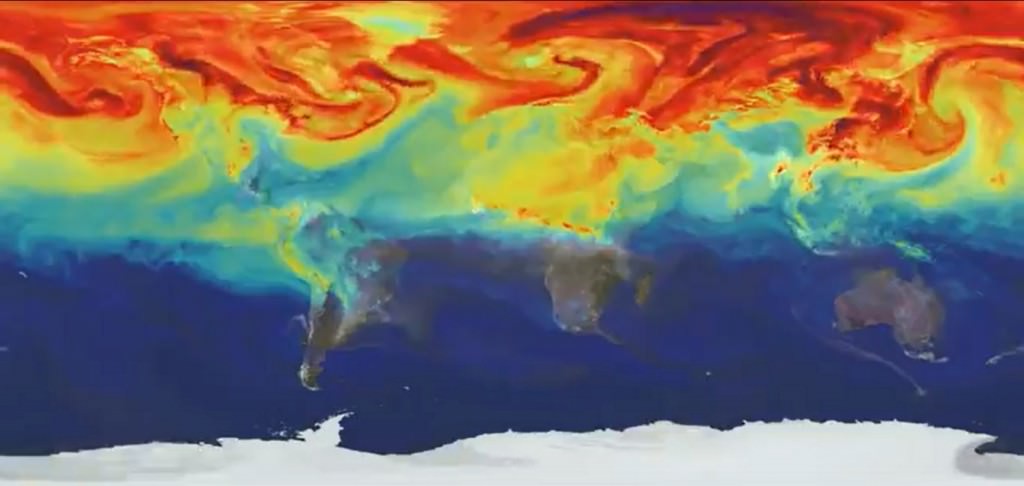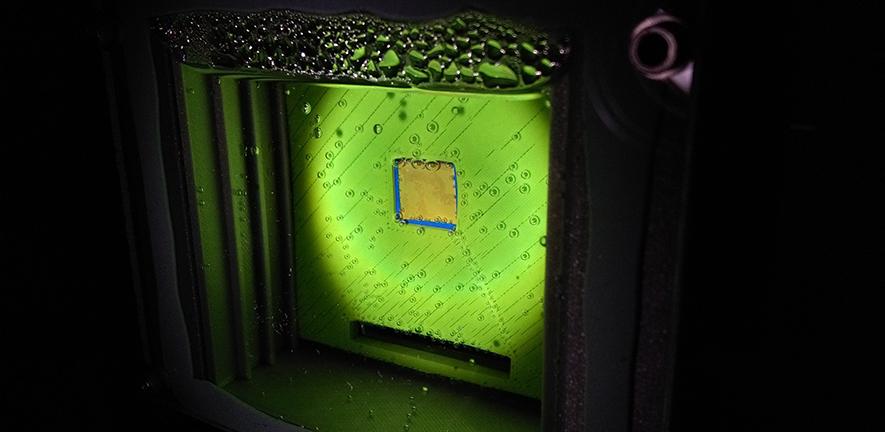There is no doubt that climate change is a very serious (and worsening) problem. According to a recent report by the Intergovernmental Panel on Climate Change (IPCC), even if all the industrialized nations of the world became carbon neutral overnight, the problem would continue to get worse. In short, it’s not enough to stop pumping megatons of CO2 into the atmosphere; we also have to start removing what we’ve already put there.
This is where the technique known as carbon capture (or carbon removal) comes into play. Taking their cue from nature, an international team of researchers from the University of Waterloo, Ontario, have created an “artificial leaf” that mimics the carbon-scrubbing abilities of the real thing. But rather than turning atmospheric CO2 into a source of fuel for itself, the leaf converts it into a useful alternative fuel.
The team’s research was described in a paper that appeared recently in the journal Nature Energy. The team was led by Yimin A. Wu, a researcher with the Center for Nanoscale Materials at the Argonne National Laboratory (ANL) in Illinois and a professor of engineering from the Waterloo Institute for Nanotechnology (WIN). He was joined by researchers from both institutions, as well as California State University (Northridge), and the City University of Hong Kong.

In nature, green plants convert atmospheric CO2 and water into glucose and oxygen through the process of photosynthesis. This is made possible thanks to the pigment chlorophyll, which absorbs light from the Sun in multiple wavelengths (violet-blue and orange-red) to power the chemical reactions. The glucose is then used by the plants as a fuel source, while the oxygen gas is released.
As Wu explained, he and his team used the same idea to design their artificial leaf, which relies on a very similar process but produces different end products. “We call it an artificial leaf because it mimics real leaves and the process of photosynthesis,” he said. “A leaf produces glucose and oxygen. We produce methanol and oxygen.”
The key to the process (which Wu and his colleagues have been working on since 2015) is cuprous oxide, a cheap red powder that is chemically engineered to have as many eight-sided particles as possible. This powder is created by a chemical reaction when glucose, copper acetate, sodium hydroxide, and sodium dodecyl sulfate are added to water that has been heated to a specified temperature.

This powder is then added to water where it serves as the catalyst as carbon dioxide is pumped in and a solar simulator shines a beam of white light into the solution. The resulting chemical reaction produces oxygen gas (through photosynthesis) while the CO2, water, and powder solution are converted into methanol. Since methanol has a lower boiling point than water, the solution is heated and the methanol is collected as it evaporates.
This process mirrors similar research being conducted at the University of Cambridge in the UK, where researchers have developed a device that uses photosynthesis produced by sunlight and cobalt light-absorbers to turn water and CO2 gas into syngas. This substance is made from a mixture of hydrogen and carbon monoxide and is used in the manufacture of alternative fuels, pharmaceuticals, plastics, and fertilizers.
It is also similar to the “artificial tree” concept developed by Klaus Lackner, director of the Lenfest Center for Sustainable Energy at Columbia University. Years back, Lackner proposed a method where “trees” with resin-coated plastic leaves could remove as much as 100 times as CO2 from the air as natural trees. Once the leaves have soaked up as much as carbon dioxide as they can, they are placed in water to create biofuels.

A process like this is exciting for two reasons. First of all, removing carbon dioxide (the primary contributor to global warming) from the atmosphere will help to slow climate change. Second, the resulting alternative fuels will allow for people to continue relying on non-electric automobiles, thus giving us more time to make the transition to carbon-neutral living. Or as Wu told Universe Today via email:
“This technology is expected to reduce CO2 emission from oil companies, automobile companies and steel companies. It can also provide clean and sustainable fuels, methanol, for vehicles and aircrafts. Methanol is also a feedstock in chemical industry to make plastics and fibers. This provides a solution to reduce CO2 emission and produce sustainable fuels for green economy.”
In the future, additional steps will be taken to increase the methanol yield and commercializing the patented process so it can be used for industrial purposes. “I’m extremely excited about the potential of this discovery to change the game,” added Wu. “Climate change is an urgent problem and we can help reduce CO2 emissions while also creating an alternative fuel.”
Further Reading: University of Waterloo, Nature Energy

